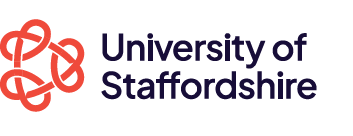Module Descriptors

VISUAL EXPLORATION
GRAP50079
Key Facts
Digital, Technology, Innovation and Business
Level 5
45 credits
Contact
Leader: Samantha Owen
Email: Samantha.Owen@staffs.ac.uk
Hours of Study
Scheduled Learning and Teaching Activities: 108
Independent Study Hours: 342
Total Learning Hours: 450
Assessment
- CWK - A&D weighted at 100%
Module Details
Module Indicative Content
This module is concerned with visual exploration and communication in its many forms. Through practical projects you will explore a problem visually, tackling them in a number of ways. Through a process of selection informed by appropriate research you will experiment with both creative visual thinking and a variety of media in order to identify a suitable visual solution. You will be addressing many aspects of the design process, which will include semiotics and communicating to diverse audiences in order to resolve a problem in an appropriate manner and media and to place your work in a professional context.
This module also aims to build upon and develop existing skills in typography and ideas generation gained at level 4. It explores issues such as the rules of legibility and readability for various media, the relationships between words and images and the resulting semiotics that occur. Through projects you will explore how type and image can work both separately and together to effectively communicate to an identified audience.
This module also aims to build upon and develop existing skills in typography and ideas generation gained at level 4. It explores issues such as the rules of legibility and readability for various media, the relationships between words and images and the resulting semiotics that occur. Through projects you will explore how type and image can work both separately and together to effectively communicate to an identified audience.
Module Texts
Ambrose G & Harris P. (2003) The Fundamentals of Creative Design AVA publishing
Crow D. (2003) Visible Signs. AVA Publishing
Drate S. & Salavetz J. (2001) Extreme Design How Design Books
Haslam. A & Baines P. (2002) Type and Typography
Johnson M. (2002) Problem Solved Phaidon
Jury D. (2002) About Face Reviving the Rules of Typography Roto Vision
Odling-Smee A. (2002) The new handmade graphics RotoVision.
Philip B. Meggs (1992) Type & Image: The Language of Graphic Design. Van Nostrand Reinhold.
Samara T. (2003) Making & Breaking the Grid. Rockport Publishers
Street R. & Lewis F. (2003) Touch Graphics The Power of Tactile Design Rockport
Williams.J (May 1st 2012) Type Matters! Merrell Publishers
Journals:
Design Week
Marketing Week
Creative Review
Crow D. (2003) Visible Signs. AVA Publishing
Drate S. & Salavetz J. (2001) Extreme Design How Design Books
Haslam. A & Baines P. (2002) Type and Typography
Johnson M. (2002) Problem Solved Phaidon
Jury D. (2002) About Face Reviving the Rules of Typography Roto Vision
Odling-Smee A. (2002) The new handmade graphics RotoVision.
Philip B. Meggs (1992) Type & Image: The Language of Graphic Design. Van Nostrand Reinhold.
Samara T. (2003) Making & Breaking the Grid. Rockport Publishers
Street R. & Lewis F. (2003) Touch Graphics The Power of Tactile Design Rockport
Williams.J (May 1st 2012) Type Matters! Merrell Publishers
Journals:
Design Week
Marketing Week
Creative Review
Module Resources
Studio workspace and seminar room with presentation and projection facilities.
Computer Workshops
Specific skills modulettes will be assigned to this module.
Library
Internet access
Design studio
Experimental workshop resources for mixed media experimentation
Controlled studio environment for life drawing classes.
Macintosh G5s
Software: Adobe Illustrator, Photoshop, Indesign, i-movie
Black and White A3 printer
Colour Printer (computer workshops)
Animation Workshops
Computer Workshops
Specific skills modulettes will be assigned to this module.
Library
Internet access
Design studio
Experimental workshop resources for mixed media experimentation
Controlled studio environment for life drawing classes.
Macintosh G5s
Software: Adobe Illustrator, Photoshop, Indesign, i-movie
Black and White A3 printer
Colour Printer (computer workshops)
Animation Workshops
Module Additional Assessment Details
WEIGHTED at 100%.
You will present for assessment a body of work as outlined in the module information pack.
This is likely to include:
Finished visuals, together with layout pads and sketchbooks showing research containing appropriate annotation into a diverse range of traditional and digital image making techniques as well as practicing artists and designers (Learning Outcome: 1), design development work, providing evidence of your ability to: identify, research and analyse a visual communication problem, generate a range of creative proposals and select and present solutions in appropriate visual forms. [Learning Outcomes 2, 4, 5 ,6]
Produce and select solutions that demonstrate a developing aesthetic judgment based on sound research and observation, [Learning Outcomes 1,5,6]
Demonstrate an awareness of creative production processes.[Learning Outcome 3]
KEY INFORMATION SETS
100% coursework
You will present for assessment a body of work as outlined in the module information pack.
This is likely to include:
Finished visuals, together with layout pads and sketchbooks showing research containing appropriate annotation into a diverse range of traditional and digital image making techniques as well as practicing artists and designers (Learning Outcome: 1), design development work, providing evidence of your ability to: identify, research and analyse a visual communication problem, generate a range of creative proposals and select and present solutions in appropriate visual forms. [Learning Outcomes 2, 4, 5 ,6]
Produce and select solutions that demonstrate a developing aesthetic judgment based on sound research and observation, [Learning Outcomes 1,5,6]
Demonstrate an awareness of creative production processes.[Learning Outcome 3]
KEY INFORMATION SETS
100% coursework
Module Learning Strategies
Project work will provide the framework through which learning will take place, it will integrate the practical with the theoretical and the technical aspects of visual exploration and communication. There will be studio work, including introductory seminars/lectures, followed by group tutorials and crits to present findings/visuals. There will also be group instruction in the use of image manipulation software and the use of relevant (typographic)software
KEY INFORMATION SETS
24% scheduled L&T activities
76% guided independent learning
KEY INFORMATION SETS
24% scheduled L&T activities
76% guided independent learning